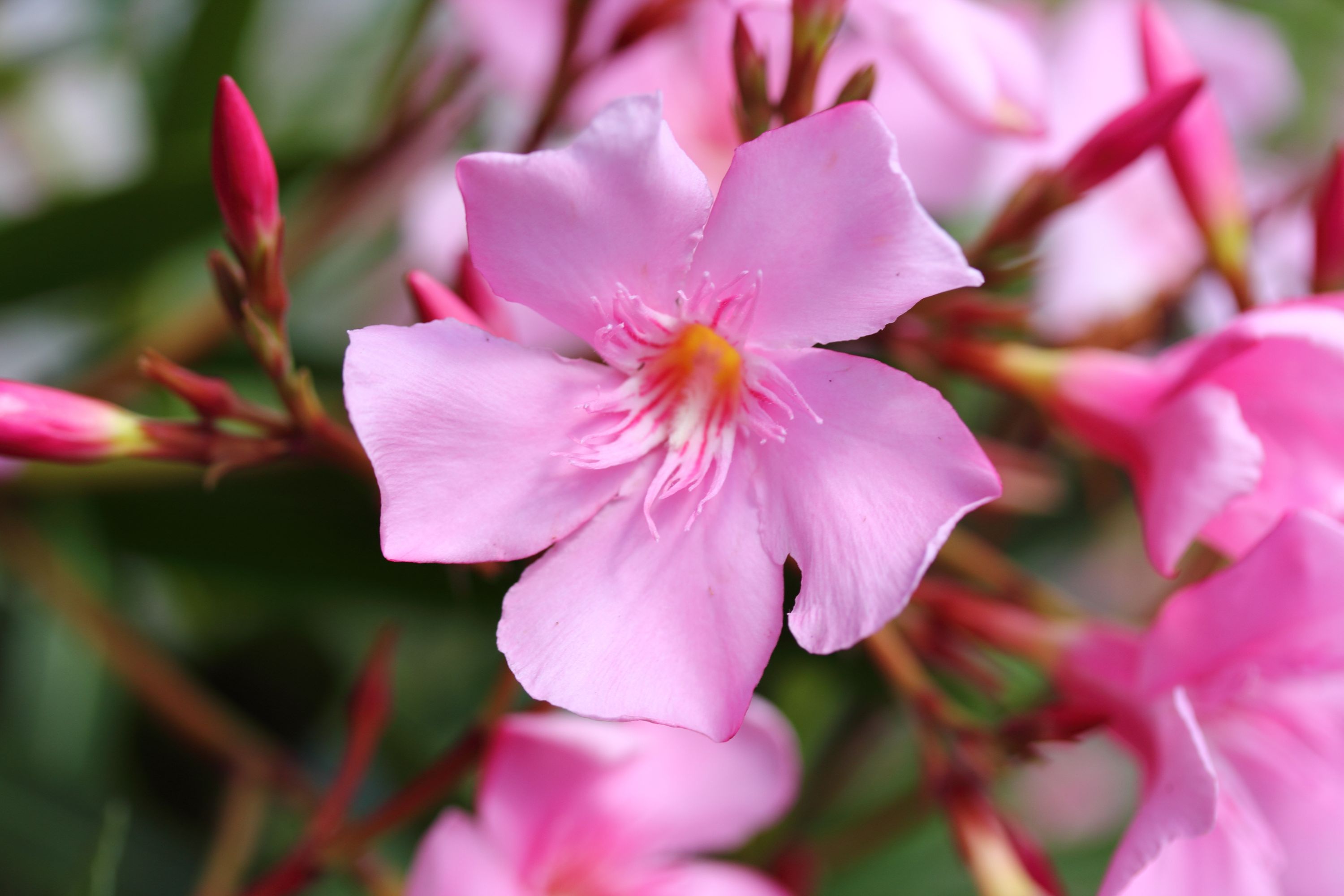Oleander
(Nerium oleander)

Description
Nerium oleander is a popular ornamental shrub known for its beautiful, fragrant flowers and evergreen foliage. This plant is native to the Mediterranean region but has now spread throughout the world, growing in warm and arid environments. In this article, we will explore the fascinating world of Nerium oleander, including its taxonomy, morphology, distribution, and cultivation. Taxonomy Nerium oleander is a member of the family Apocynaceae, which includes many other flowering plants such as the periwinkle and the dogbane. The genus Nerium contains only one species, Nerium oleander. The scientific name, Nerium oleander, comes from the Greek word "nerion," which means "water plant," and the Latin word "oleander," which means "olive-like." Morphology Nerium oleander is a shrub that can grow up to 20 feet tall and 12 feet wide. It has evergreen, leathery, dark-green leaves that are lanceolate, elongated, and arranged in whorls of three. The leaves are glossy and have a bitter taste. The flowers are clustered at the tips of the branches, with each cluster containing up to 25 flowers. The flowers are five-lobed, funnel-shaped, and vary in color from white, pink, red, or yellow. The fruit is a long, narrow capsule that contains numerous seeds. Distribution Nerium oleander is native to the Mediterranean region, including southern Europe, northern Africa, and the eastern Mediterranean. It has also been introduced to other parts of the world, including Asia, Australia, and the Americas. In the United States, Nerium oleander is commonly grown in warm, dry regions of the Southeast and Southwest. Cultivation Nerium oleander is a popular ornamental plant in gardens, parks, and landscapes because of its beautiful flowers and evergreen foliage. It is also used as a hedge, windbreak, or screen plant. It prefers a sunny location and well-drained soil. It is drought-tolerant but requires regular watering during the first few years after planting. It can be propagated by cuttings, which should be taken in the spring or early summer. Toxicity It is important to note that Nerium oleander is a highly toxic plant. All parts of the plant contain toxic compounds, including cardiac glycosides, which can cause serious health problems in humans and animals if ingested. The ingestion of even small amounts of the plant can cause severe vomiting, diarrhea, irregular heart rate, seizures, and in some cases, death. Therefore, it is important to handle this plant with care, wear gloves when pruning or handling, and keep it away from children and pets. Conclusion Nerium oleander is a beautiful and fascinating plant that has been cultivated for centuries for its ornamental value. However, it is important to remember that this plant is highly toxic and should be handled with care. Despite its toxicity, it remains a popular and important plant in many parts of the world.
Taxonomic tree:







